
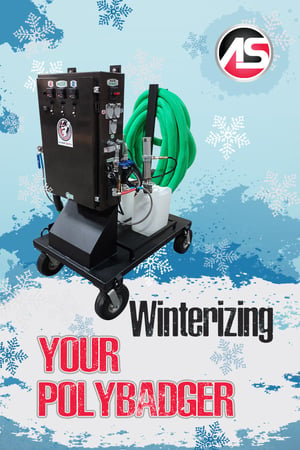 As the weather gets colder, contractors in some regions will need to prepare their PolyBadger Lifting Systems for storage during the off-season. We're providing step-by-step instructions for that procedure in this article.
As the weather gets colder, contractors in some regions will need to prepare their PolyBadger Lifting Systems for storage during the off-season. We're providing step-by-step instructions for that procedure in this article.
Prepping a PolyBadger for Winter Storage
- Establish power to the cabinet and heat the hose (A heater, B heater, and hose) to the target temperature of 130° F.
- Introduce material to the cabinet.
- Turn the air supply on and recirculate to heat up the ISO and resin.
- Once the PolyBadger is up to temperature, turn off the air supply and remove the airlines from the stick pumps.
- Remove the supply and the recirculation line from the A-side stick pump.
- Drain all the remaining material from the pump and clean it with brake cleaner.
- Place the stick A side stubby stick pump into a 5-gallon pail of the AS Pump Flush.
- Reconnect the supply line and leave the recirculation line to drain in a purge pail.
- Repeat steps 5-8 on the B-side stick pump.
- Reconnect the air supply to the stick pumps, hold the return lines in a purge pail, and slowly open the air valve on the stick pumps.
- You will notice material slowly pushed out of the recirculation line into the purge pail. Continue to pump AP Flush 121 through the system until it comes out of the recirculation line clear, with no added color or debris.
- Shut the air valve supplying the stick pumps. This will stop the flow of material.
- Reconnect the recirculation lines to the appropriate stick pump and tighten.
- Turn the recirculation pump valves to supply the hose.
- You can remove the Handi Gun or leave it on for this stage, holding the hose in the purge pail. Turn on the supply valves on the end of the hose just before the Handi Gun. Slowly open the air valve on the stick pumps and pull the trigger on the gun.
- You will notice material slowly pushed out of the hose line into the purge pail. Continue to pump AP Flush 121 through the system until it comes out of the hose line clear, with no added color or debris.
- Shut the air valve supplying the stick pumps. This will stop the flow of material.
- Remove the stick pumps from the AS Pump Flush. (Make sure to mark your pails A and B for future use).
- Insert stick pumps into AP Pump Saver 195. (Make sure to mark your pails A and B for future use)
- Push the AP Pump Saver 195 through the hose line. You will notice the AS Pump Flush slowly pushed out of the hose line into the purge pail. Continue to pump AP Pump Saver 195 through the system until it comes out of the hose line clear (you will notice a thick, clean fluid).
- Turn off the supply valves on the hose just before the Handi Gun.
- Disconnect the air supply to the stick pumps.
- Move the hose supply valve into the recirculation position to depressurize the system.
- Shut off supply valves to the cabinet.
- Turn off heat zones.
- Turn off the main disconnect.
- Remove residual grease from interior cabinet pumps.
- Replace with new grease.



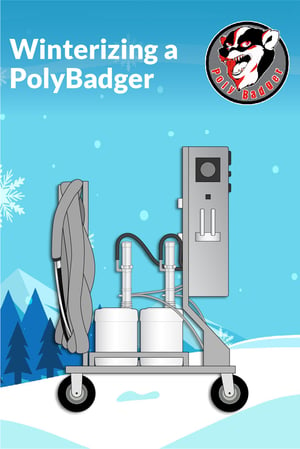 As the weather gets colder, contractors in some regions will need to prepare their
As the weather gets colder, contractors in some regions will need to prepare their 



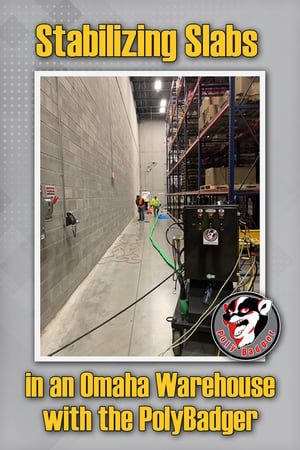 Not too long ago, I visited my customer Melvin Sudbeck’s company, Sudbeck Construction, on a warehouse job. They were called in by the property owner because he had noticed four slabs that were shifting up and scraping against a wall when forklifts crossed them. The crew drilled a couple of preliminary holes in the slabs for diagnostic purposes and discovered voids underneath ranging from 12-18 inches in depth.
Not too long ago, I visited my customer Melvin Sudbeck’s company, Sudbeck Construction, on a warehouse job. They were called in by the property owner because he had noticed four slabs that were shifting up and scraping against a wall when forklifts crossed them. The crew drilled a couple of preliminary holes in the slabs for diagnostic purposes and discovered voids underneath ranging from 12-18 inches in depth.
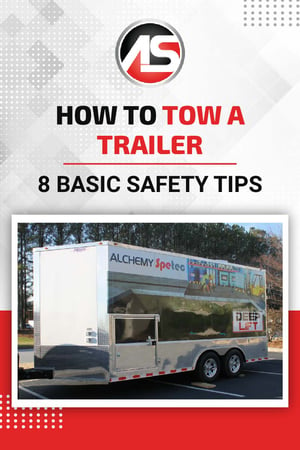 Whether it’s your first time or you’re a seasoned veteran, this guide can serve as a simple checklist to keep your equipment and 16-20 foot trailer safe as you travel to your next project.
Whether it’s your first time or you’re a seasoned veteran, this guide can serve as a simple checklist to keep your equipment and 16-20 foot trailer safe as you travel to your next project.
 High-performance polyurethane concrete repair equipment is essential to the success of any contractor in this industry. For that reason, I'd like to bring the Section 179 tax break to your attention. According the
High-performance polyurethane concrete repair equipment is essential to the success of any contractor in this industry. For that reason, I'd like to bring the Section 179 tax break to your attention. According the 
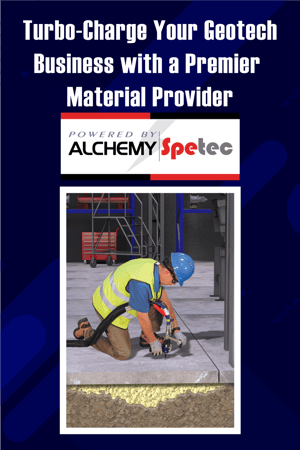 The choice of a polyurethane material provider for your geotechnical contracting business is a critical decision with far-reaching consequences. In addition to top quality concrete and soil repair material, a premier provider will offer reliable high-performance equipment, rock-solid tech support, extensive training resources and even marketing assistance.
The choice of a polyurethane material provider for your geotechnical contracting business is a critical decision with far-reaching consequences. In addition to top quality concrete and soil repair material, a premier provider will offer reliable high-performance equipment, rock-solid tech support, extensive training resources and even marketing assistance.
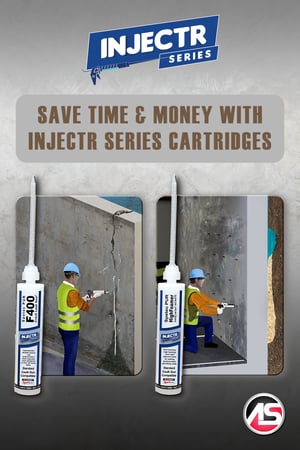 The INJECTR Series single cartridge houses grout and accelerator in two separate interior compartments. The grout and accelerator are thoroughly blended when injected through the static mixer. This cartridge is compatible with standard caulk guns.
The INJECTR Series single cartridge houses grout and accelerator in two separate interior compartments. The grout and accelerator are thoroughly blended when injected through the static mixer. This cartridge is compatible with standard caulk guns. 



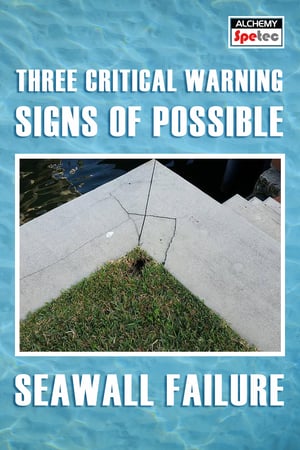 Storms, tidal action, and soil erosion constantly cause damage to seawalls. It is essential to identify any problems as early as possible. Here are the most common warning signs of seawall failure:
Storms, tidal action, and soil erosion constantly cause damage to seawalls. It is essential to identify any problems as early as possible. Here are the most common warning signs of seawall failure: